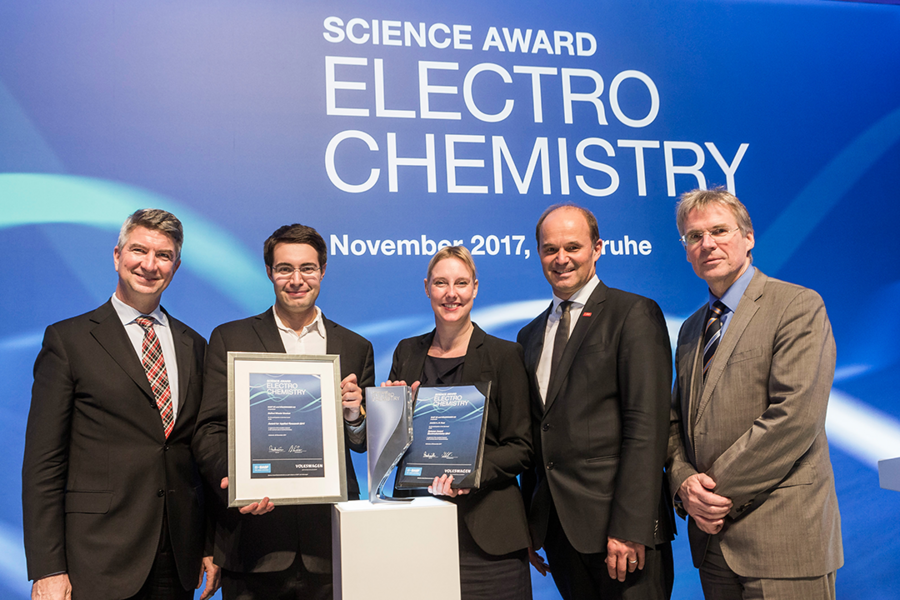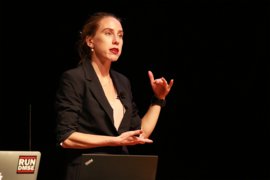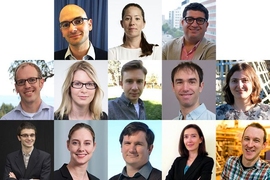Jennifer L. M. Rupp, who holds joint appointments at MIT as an assistant professor in the departments of Materials Science and Engineering (DMSE) and Electrical Engineering and Computer Science (EECS), has won the 2017 “Science Award Electrochemistry,” from Volkswagen and BASF. Rupp was honored for her work on energy storage systems.
Rupp received the award, which is worth about $47,000, on Dec. 1 at ceremonies held at Karlsruhe Institute of Technology in Germany. Rupp’s Electrochemical Materials Laboratory at MIT is working to replace the flammable liquid electrolyte in lithium batteries with a safer solid-state lithium electrolyte.
“The team was honored to receive the award for their work on processing and designing new solid-state, garnet-type batteries, and for their commitment to integrate cathodes with socioeconomically acceptable elements," Rupp says. “Designing lithium conducting glass-ceramics and battery electrode alloys can be interesting strategies for future battery architectures based on garnets to avoid lithium dendrites that often lead to performance failure." Dendrites are lithium filaments shaped like tree leaves or snowflakes that can form in rechargeable lithium metal batteries, and their unchecked growth can cause a cell to short-circuit.
Ulrich Eichhorn, head of group research and development for Volkswagen AG, says the the winners of the Science Award “are an excellent example of innovative and creative ideas in this field.” The German automaker plans to reach a goal of 25 percent of its vehicles being battery-powered electrics by 2025.
The award noted Rupp’s work on ceramic engineering for fast lithium transfer in garnet-type batteries and a novel glassy-type lithium ion conductor that may lead to new design principles for solid-state batteries.
“BASF creates chemistry for a sustainable future. We all know that batteries are at the core of electromobility, and there is great potential for specific technological progress in this area. Yet, there are scientific hurdles we must first overcome,” says Martin Brudermüller, vice chairman of the board of executive directors and chief technology officer at BASF. “Electrochemistry is a key technology for sustainable future mobility. That is why we need first-class research around the globe conducted by excellent scientists who inspire each other to continuously develop new and better solutions.”
Rupp joined the DMSE in January as the Thomas Lord Assistant Professor of Materials Science and Engineering at MIT, and recently was appointed as an assistant professor in EECS. She also conducts research on materials for solid oxide fuel cells, electrochemical sensors, and information storage devices.
The BASF and Volkswagen International “Science Award Electrochemistry” has been given out annually since 2012.







